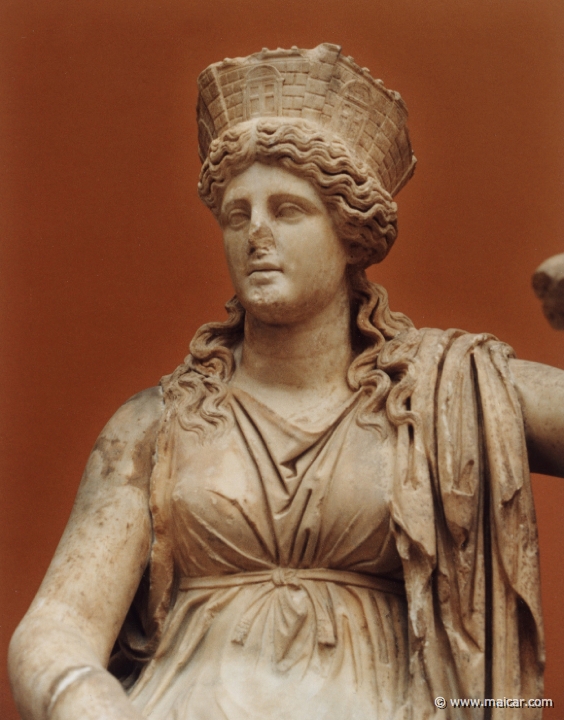Rhea is the daughter of the earth goddess Gaia and the sky god Uranus, in Greek mythology. The classical Greeks saw her as the mother of the Olympian goddesses and gods, but not as an Olympian goddess in her own right. She was originally worshiped in the island of Crete, where according to myth, she saved the new-born Zeus from being devoured by Cronus, by substituting a stone for the infant god and entrusting him to the care of her attendants. Rhea only appears in Greek art from the fourth century BC, when her iconography draws on that of Cybele. Most often Rhea's symbol is a pair of lions, the ones that pulled her celestial chariot and were seen often, rampant, one on either side of the gateways through the walls to many cities in the ancient world.
Cronus was the leader and the youngest of the first generation of Titans, divine descendants of Gaia, the earth, and Uranus, the sky. He overthrew his father and ruled during the mythological Golden Age, until he was overthrown by his own son Zeus and imprisoned in Tartarus. Cronus was usually depicted with the harpe and a sickle, which was the instrument he used to castrate and depose Uranus, his father. In Athens, on the twelfth day of the Attic month of Hekatombaion, a festival called Kronia was held in honour of Cronus to celebrate the harvest, suggesting that, as a result of his association with the virtuous Golden Age, Cronus continued to preside as a patron of harvest. Cronus was also identified in classical antiquity with the Roman deity Saturn.


No comments:
Post a Comment